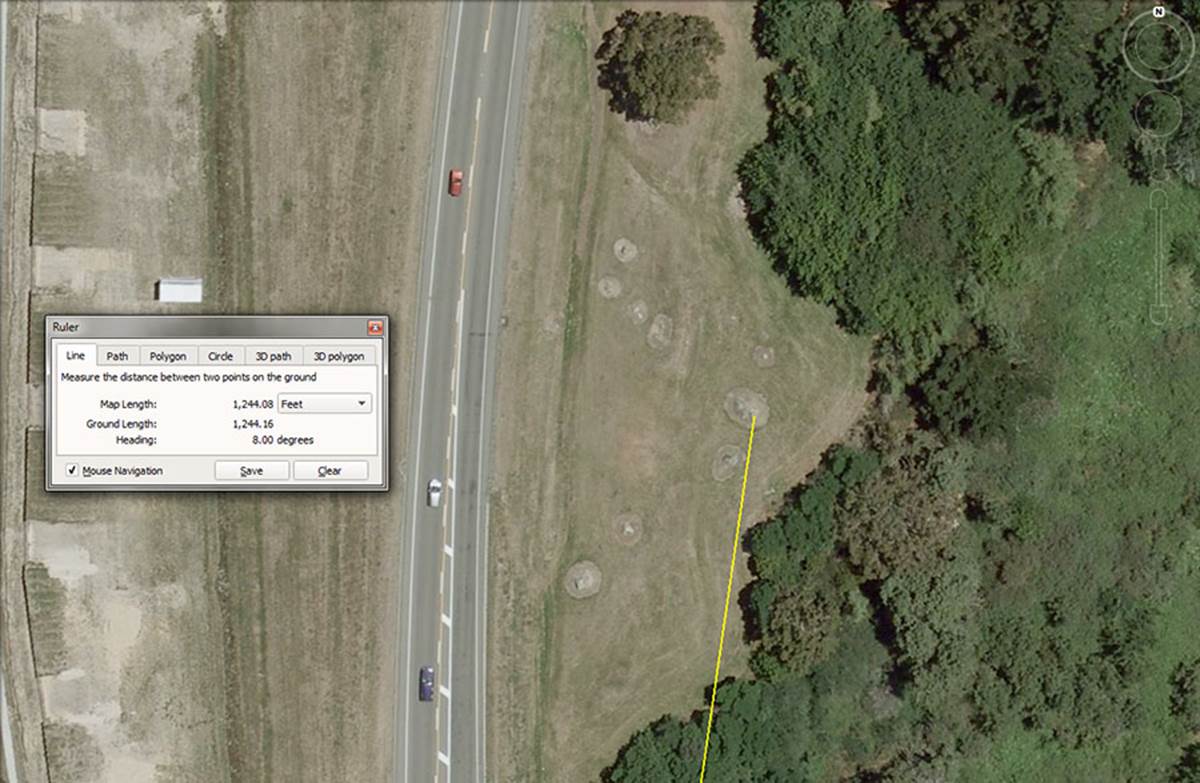
SITE 2 – POSITION 4.

This outer-marker sits 1244.16-feet from the hubstone at an angle of 8-degrees.
The 1244.16-feet value is in homage to the equatorial size of the Earth and 12441.6-miles would be 1/2 of the 24883.2-mile circumference.
SITE 2 – POSITION 5.

This outer-marker sits 1250-feet from the hubstone on a coded angle of 7.68-degrees.
A progression based upon 1250 goes:
1250, 2500, 3750, 5000, 6250, 7500, 8750, 10000, etc.,
The 7.68-degree angle sets up the following progression:
7.68, 15.36, 23.04, ... 46.08, ... 69.12, ... 115.2, etc.
This is essentially a progression that relates to navigation and the 24883.2-mile equatorial circumference of the Earth, of which 69.12-miles would be 1-degree of arc and 7.68-miles would equate to 1/9th of 1-degree of arc.
SITE 2 – POSITION 6.
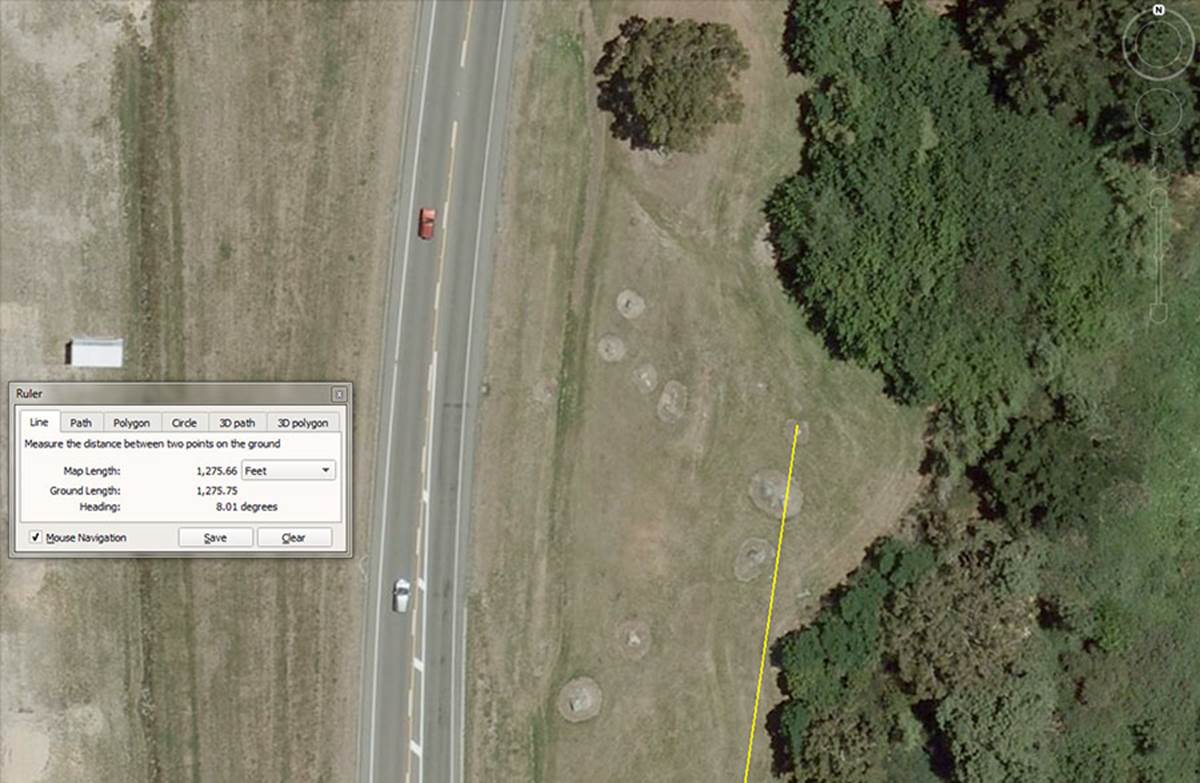
The ancient intended code for this position appears to have been 1275.75-feet out from the hubstone on an angle of 8-degrees.
Under the lunisolar Sabbatical Calendar system the count related to the moon ran for 2551.5-days or 7.2 lunar years. Simultaneously to that the solar count was 2556.75-days or 7-solar years. The distance of 1275.75 is in homage to half the lunar count or 1275.75-days. The distance would also have been read as 1278.375-feet, which in days would be ½ of 7-solar years.
SITE 2 – POSITION 7.

This outer-marker sits 1280-feet distant from the hubstone on an angle of 5.76-degrees.
A progression based upon 1280 goes:
1280, 2560, 3840, 5120, 6400, 7680, 8960, ... 11520 and is primarily navigational coding. It relates to breaking the equatorial circumference into 1/2, 1/4th, 1/8th, 1/16th, 1/32nd, 1/64th, 1/128th, etc., segments.
The 576 number was one of the most important in antiquity. A progression based upon 576 goes:
576, 1152, 1728, 2304, 2880, 3456, 4302, 4608, 5184, 5760, 6336, 6912, ... 10368, ... 15552, etc.
Again, it relates to the equatorial circumference of the Earth and break-downs of the same. With the Earth's circumference set at 24883.2-miles, its spin rate is 1036.8 MPH.
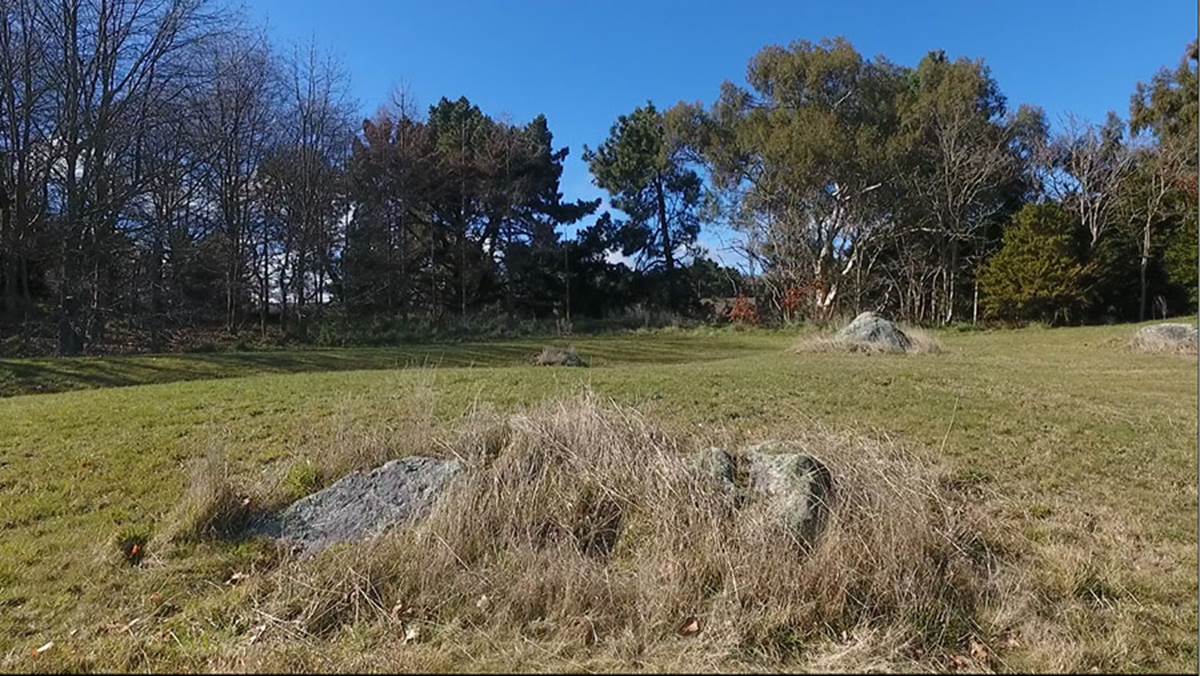
The tumbled, partially buried position 1280-feet from the hubstone at 5.76-degrees.
SITE 2 – POSITION 8.
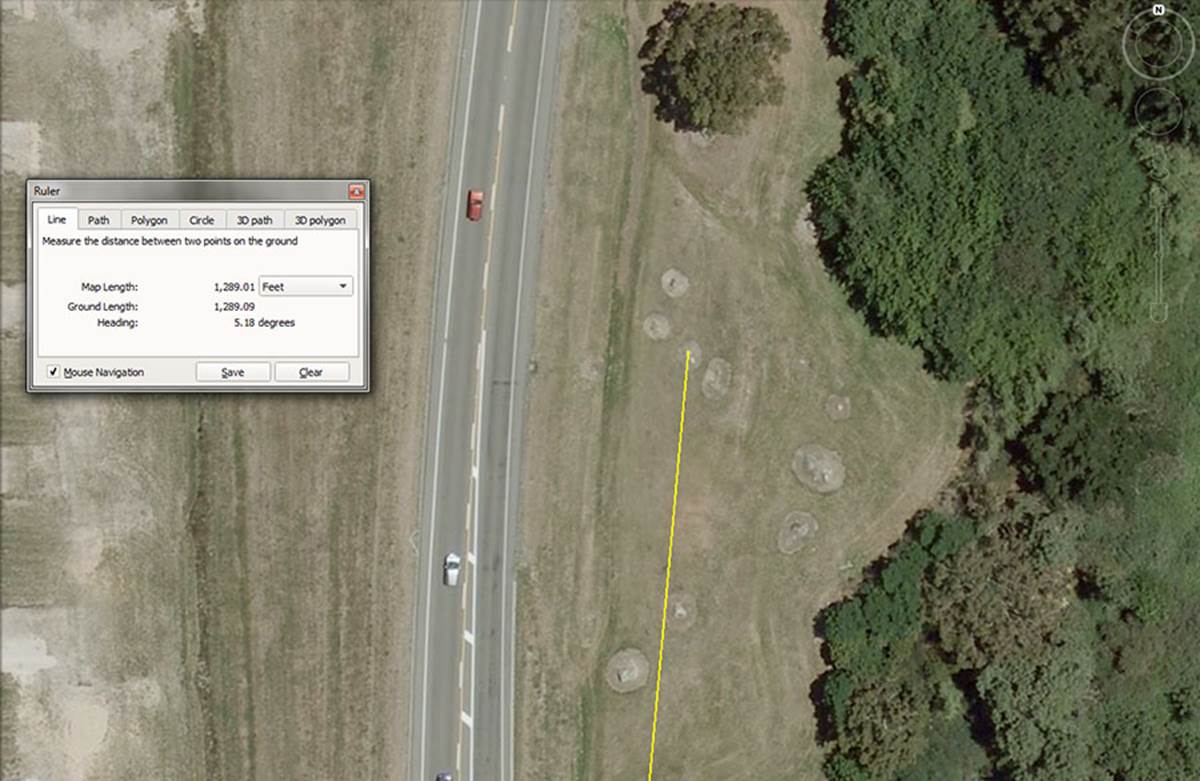
This position is a little more involved as the tutorial relates to measurements by the Egyptian Royal cubits of 20.625-inches & 20.61818182-inches, respectively. The position represents both @ 750 cubits each. The 20.625-inch cubit produces 1289.0625-feet, whereas the marginally shorter cubit produces 1288.63-feet.
The degree angle coding is 5.184-degrees.
Of course, the Great Pyramid has a slope angle of 51.84-degrees or 5184-years would equate to 1/5th of the 25920-year duration of the Precession of the Equinoxes, etc.
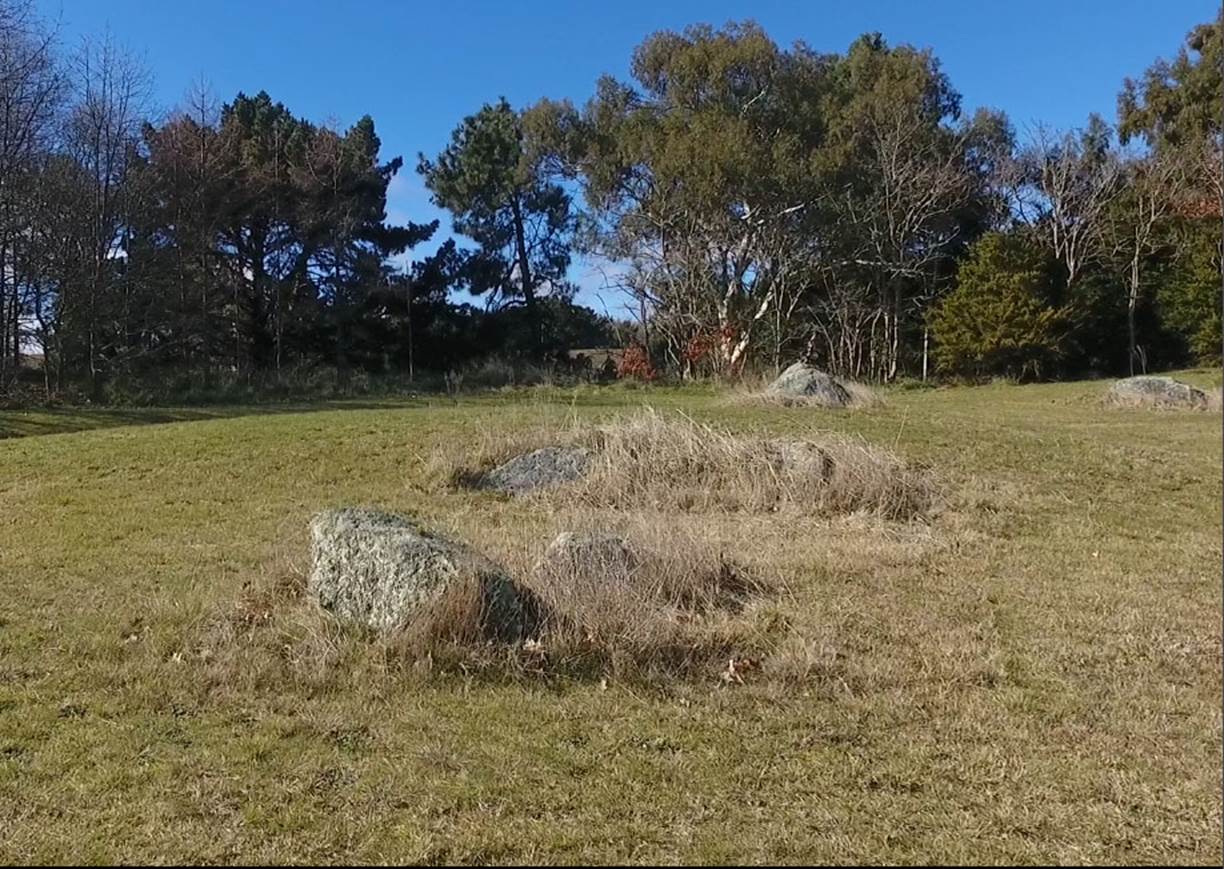
This site in the immediate foreground offered tutorials according to measurements in Egyptian Royal cubits. Other site readings in English feet of 12-inches can be similarly read in various cubits of the ancient cousin civilisations. There was an integrated measurement system shared by all the cousin civilisations of antiquity and cubits or feet of one nation were in a direct ratio to the measurement standards of other nations. This included all weights, measures and volumes standards.
SITE 2 – POSITION 9.

This outer-marker sits 1296-feet from the hubstone on an angle of 4.536-degrees.
The sum of 12960-years would be 1/2 the 25920-year duration of the Precession of the Equinoxes.
The Great Pyramid has a flat altar floor 453.6-feet above its base and has always been a truncated pyramid. Its base length is 9072-inches (4536 X 2) etc. Because the Great Pyramid encoded highly specialised numbers in its dimensions and angles, it represented a kind of Platonic solid and bureau of standards for the preservation of the numbers of civilisation. It also acted as a template by which sites like this at Taupo, New Zealand could be built with accuracy.
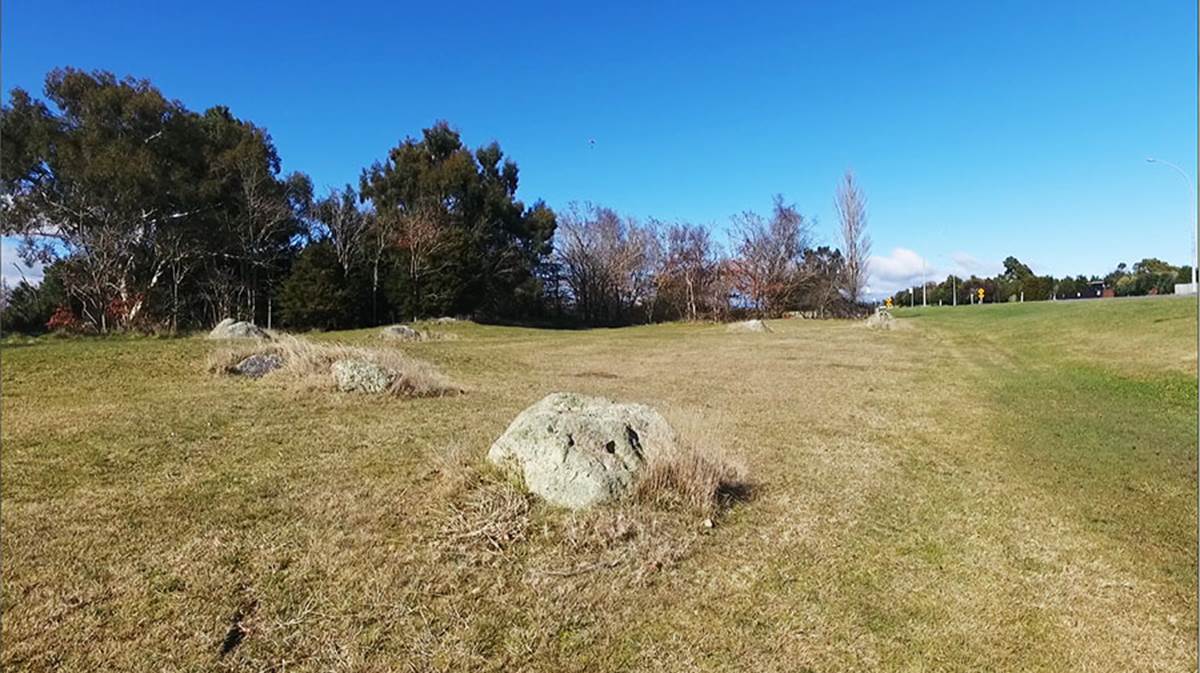
SITE 2 – POSITION 10.
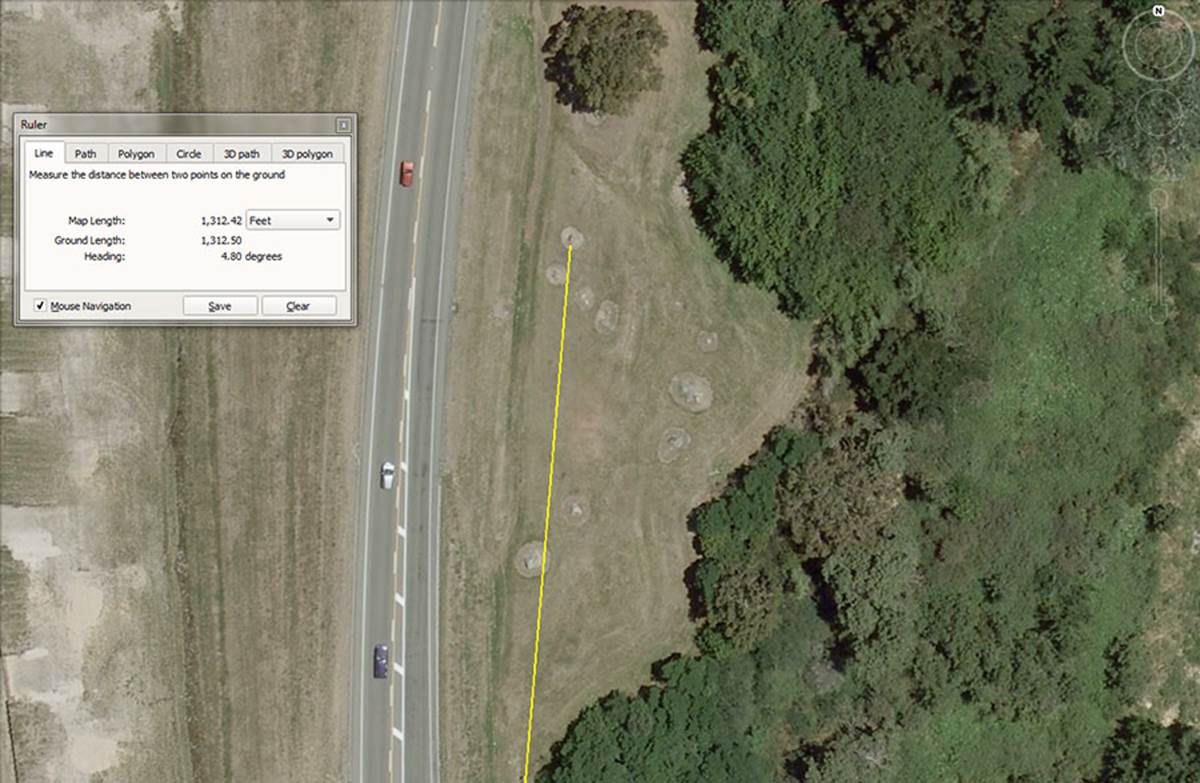
This outer marker sits a coded distance of 1312.5-feet from the hubstone on an angle of 4.8-degrees. This distance is 1/4th of a Greek mile of 5250-feet. For tutorial purposes, this position would also have encoded 1320-feet or 1/4th of a mile of 5280-feet.
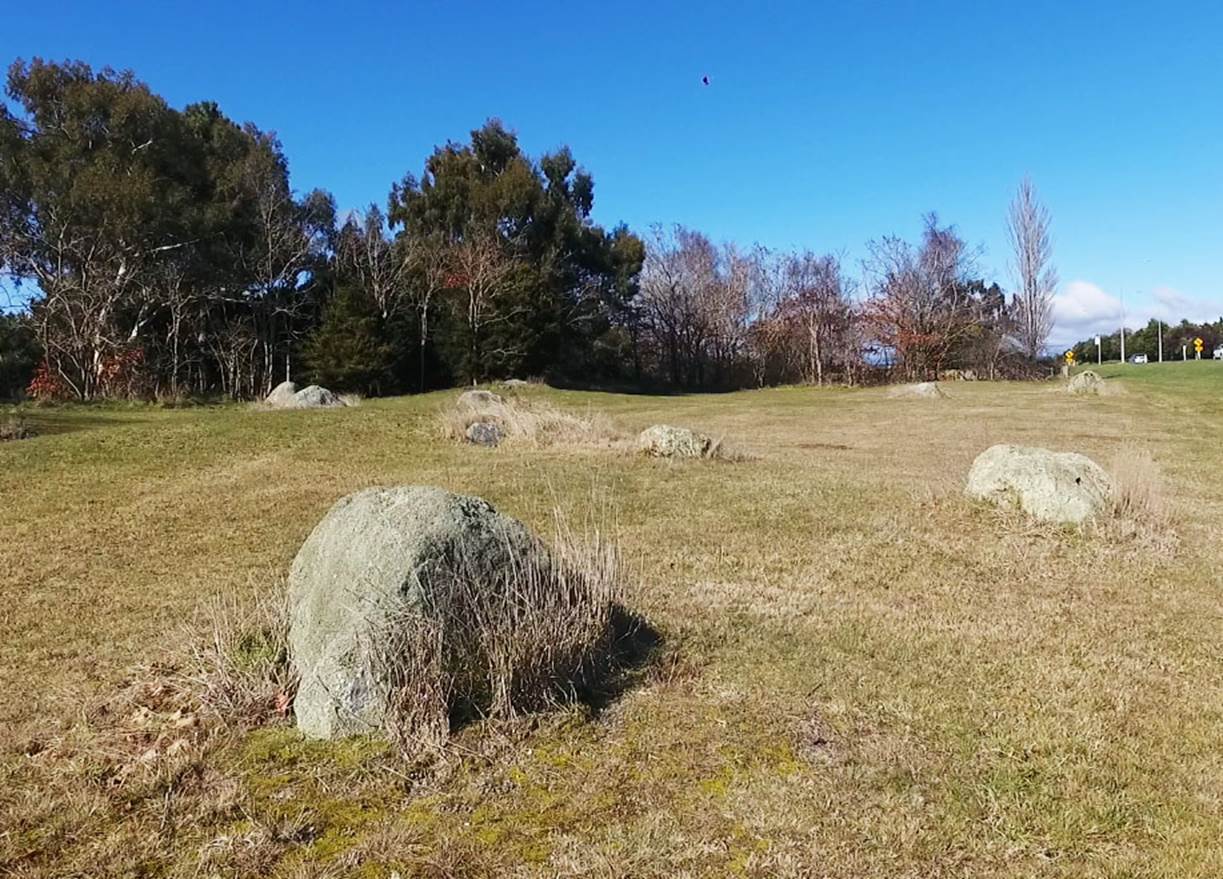
The dot in the sky of this picture is a parachutist.